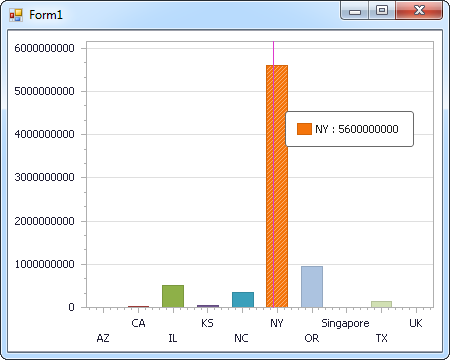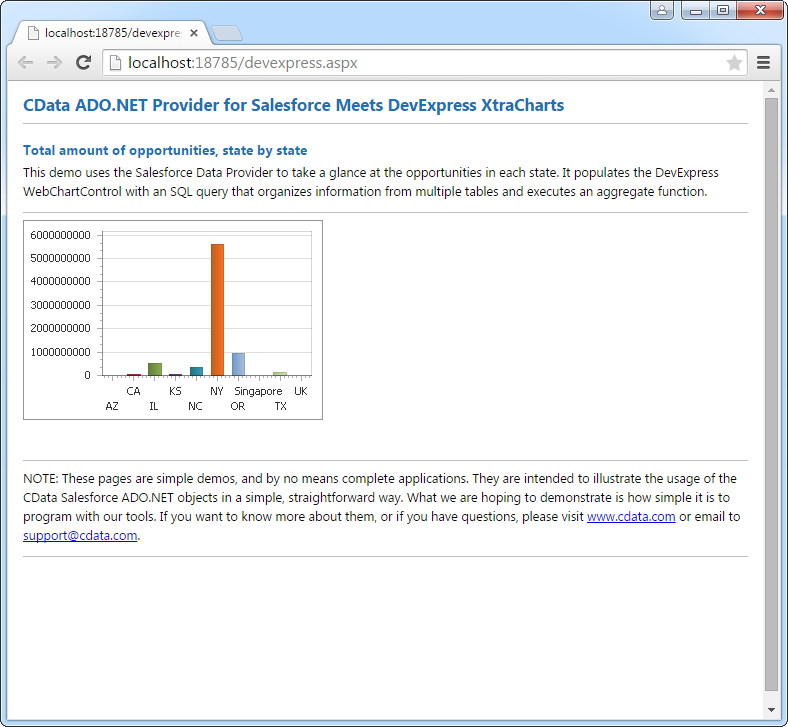Discover how a bimodal integration strategy can address the major data management challenges facing your organization today.
Get the Report →DataBind Bugzilla Data to the DevExpress Data Grid
Use the CData ADO.NET Provider for Bugzilla with the DevExpress Windows Forms and Web controls to provide Bugzilla data to a chart.
The ADO.NET Provider for Bugzilla by CData incorporates conventional ADO.NET data access components compatible with third-party controls. You can adhere to the standard ADO.NET data binding procedures to establish two-way access to real-time data through UI controls. This article will demonstrate the utilization of CData components for data binding with DevExpress UI Controls (Windows Forms and Web controls), specifically binding to a chart that visualizes live data.
You can authenticate to your Bugzilla account using two parameters:
- URL: The URL of your Bugzilla developer's page (the Home page).
- ApiKey: API Keys can be generated from the Preferences -> API Keys section of your Bugzilla developer's page.
Windows Forms Controls
The code below shows how to populate a DevExpress chart with Bugzilla data. The BugzillaDataAdapter binds to the Series property of the chart control. The Diagram property of the control defines the x- and y-axes as the column names.
using (BugzillaConnection connection = new BugzillaConnection(
"Url=http://yourdomain/Bugzilla;APIKey=abc123;")) {
BugzillaDataAdapter dataAdapter = new BugzillaDataAdapter(
"SELECT Id, Summary FROM Bugs WHERE Creator = 'user@domain.com'", connection);
DataTable table = new DataTable();
dataAdapter.Fill(table);
DevExpress.XtraCharts.Series series = new DevExpress.XtraCharts.Series();
chartControl1.Series.Add(series);
series.DataSource = table;
series.ValueDataMembers.AddRange(new string[] { "Summary" });
series.ArgumentScaleType = DevExpress.XtraCharts.ScaleType.Qualitative;
series.ArgumentDataMember = "Id";
series.ValueScaleType = DevExpress.XtraCharts.ScaleType.Numerical;
chartControl1.Legend.Visibility = DevExpress.Utils.DefaultBoolean.False;
((DevExpress.XtraCharts.SideBySideBarSeriesView)series.View).ColorEach = true;
}

Web Controls
The code below shows how to populate a DevExpress Web control with Bugzilla data. The BugzillaDataAdapter binds to the Series property of the chart; the Diagram property defines the x- and y-axes as the column names.
using DevExpress.XtraCharts;
using (BugzillaConnection connection = new BugzillaConnection(
"Url=http://yourdomain/Bugzilla;APIKey=abc123;"))
{
BugzillaDataAdapter BugzillaDataAdapter1 = new BugzillaDataAdapter("SELECT Id, Summary FROM Bugs WHERE Creator = 'user@domain.com'", connection);
DataTable table = new DataTable();
BugzillaDataAdapter1.Fill(table);
DevExpress.XtraCharts.Series series = new Series("Series1", ViewType.Bar);
WebChartControl1.Series.Add(series);
series.DataSource = table;
series.ValueDataMembers.AddRange(new string[] { "Summary" });
series.ArgumentScaleType = ScaleType.Qualitative;
series.ArgumentDataMember = "Id";
series.ValueScaleType = ScaleType.Numerical;
((DevExpress.XtraCharts.SideBySideBarSeriesView)series.View).ColorEach = true;
}







